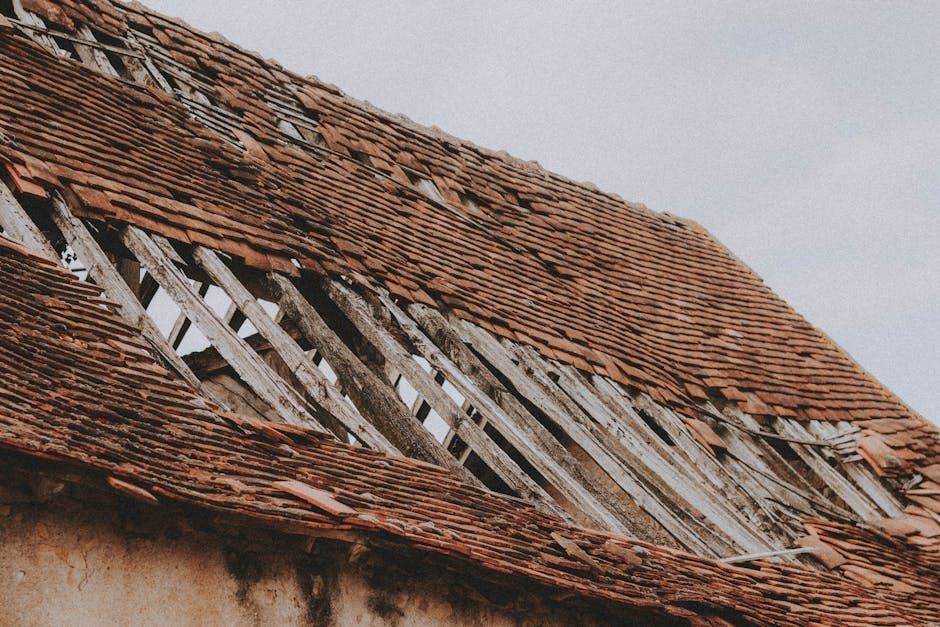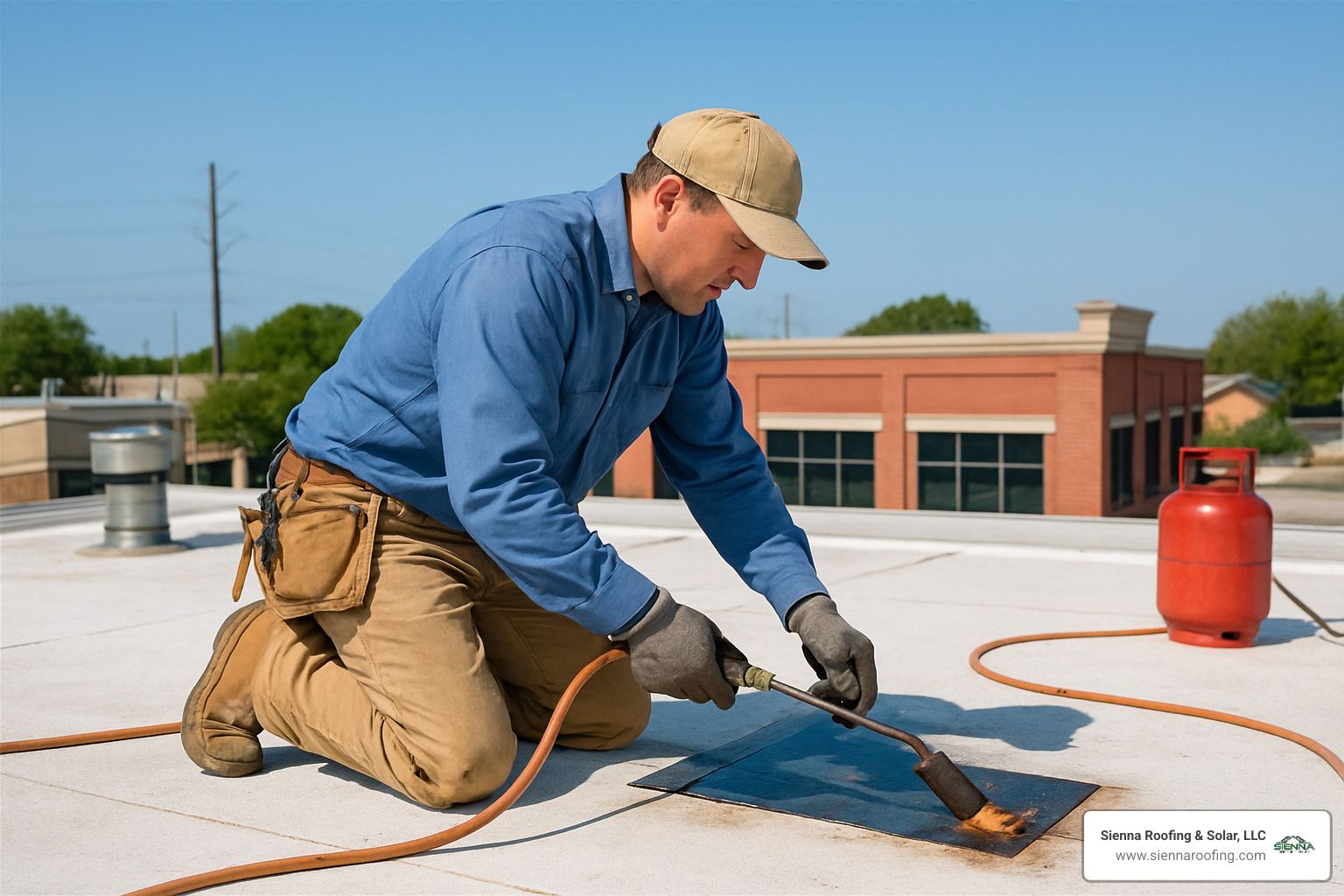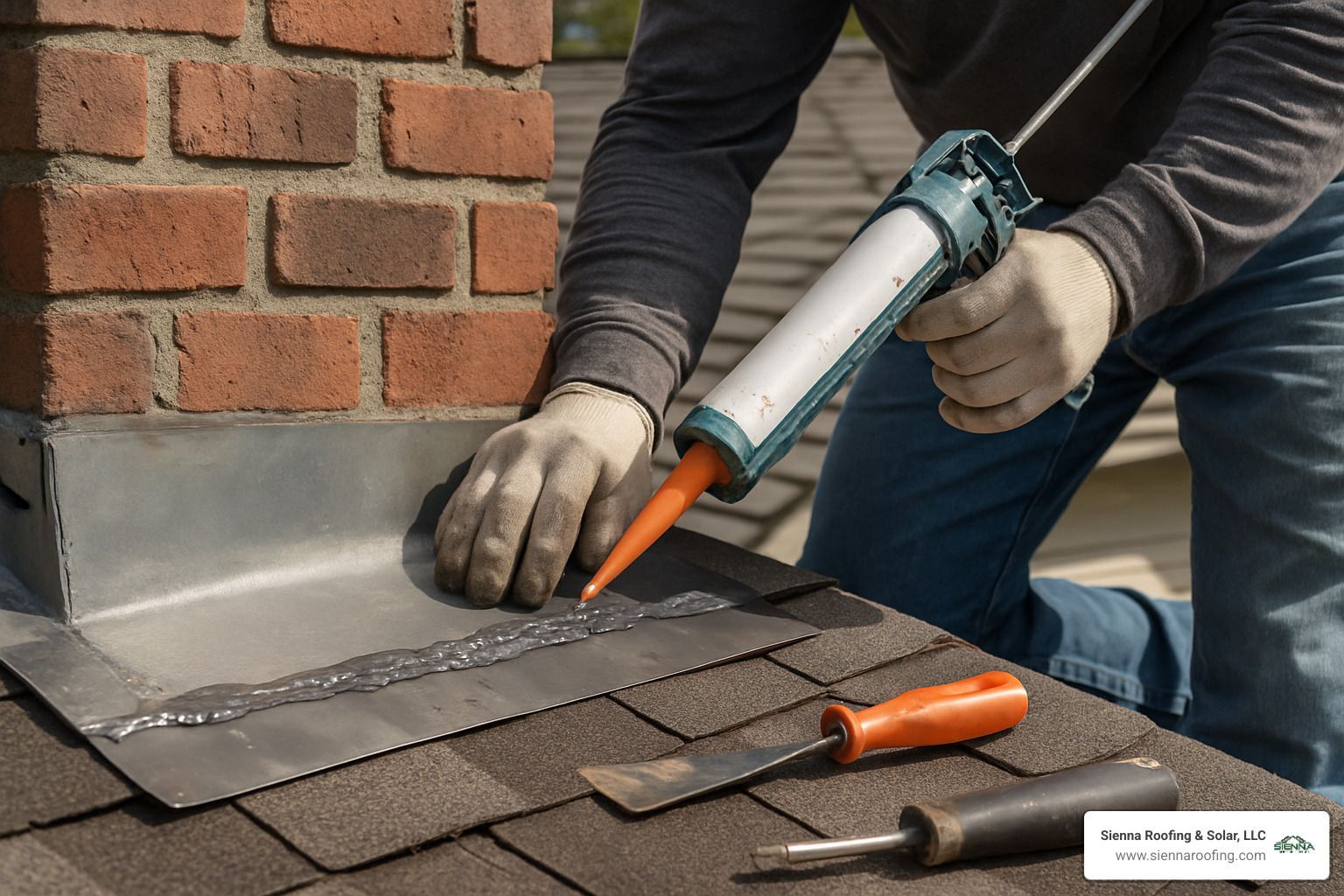Replacing Your Commercial Roof? Here's What You Need to Know Before You Go Topless

Andre Castro
Owner of Sienna Roofing
Why Your Commercial Roof Is a Critical Business Asset
Commercial roofing replacement is a significant investment that typically costs between $5-$15 per square foot, with most projects ranging from $50,000 to $120,000 for a 10,000 square foot roof. Before you commit to this major expense, here's what you need to know:
- Average lifespan: Most commercial roofs last 20-30 years with proper maintenance
- When to replace: Persistent leaks, visible damage, age beyond 20 years, rising energy bills
- Material options: Single-ply membranes (TPO, EPDM, PVC), built-up roofing (BUR), modified bitumen, metal
- Project timeline: Typically 1-5 weeks depending on size, complexity, and weather conditions
The roof on your commercial property is much more than just the top layer of your building – it's a critical system that protects everything beneath it. When considering commercial roofing replacement, many building owners focus solely on the immediate costs, missing the bigger picture of long-term protection, energy efficiency, and property value.
Maintaining the integrity of your commercial building's roof is crucial for protecting your investment and ensuring the safety of everyone inside. Whether you're facing persistent leaks, visible wear and tear, or simply reaching the end of your current roof's lifespan, understanding the replacement process can save you time, money, and stress.
I'm Andre Castro, founder of Sienna Roofing & Solar, LLC, and with my background in Construction Management and extensive experience overseeing commercial roofing replacement projects throughout Houston and Sugar Land, I've guided countless business owners through this critical investment decision.
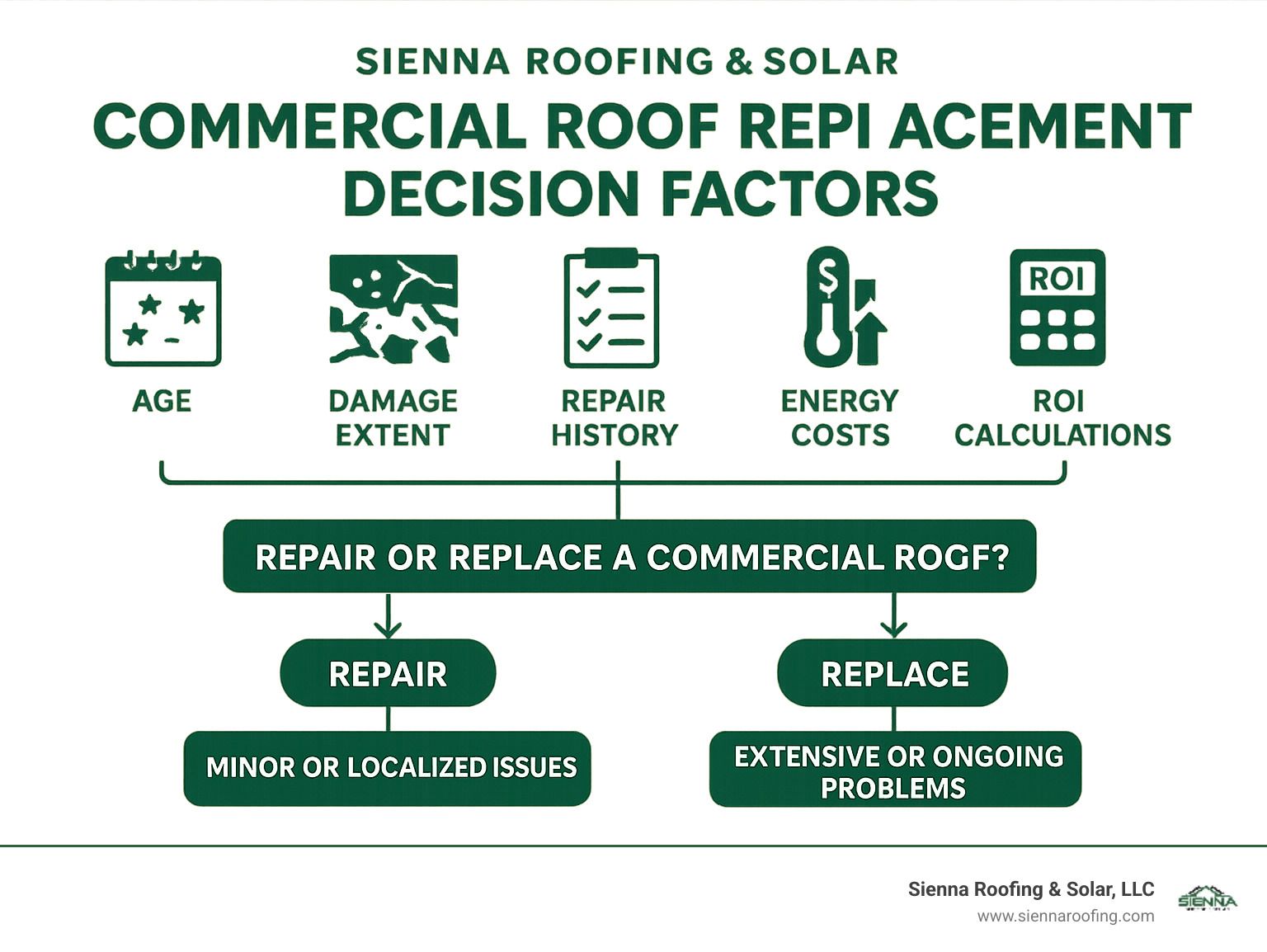
Why & When to Replace a Commercial Roof
Let's face it – no building owner wakes up excited about spending money on a new roof. But understanding when it's truly time for a commercial roofing replacement can save you from much bigger headaches down the road.
Most commercial roofs serve faithfully for about 20-25 years with proper care. But just like that trusty old truck in your fleet, there comes a time when repairs just don't make financial sense anymore.
Many of our Houston-area clients initially call us hoping for a quick fix, but sometimes the numbers tell a different story. When your roof has reached its age threshold (20-30 years for most systems), shows persistent leaks despite repairs, or has suffered severe storm damage, replacement becomes the smarter long-term investment.
Rising energy bills can also be a silent signal your roof is failing. If your HVAC system is working overtime with no clear explanation, your roof might be the culprit. Additionally, updating your roof might be necessary to meet current building codes or to take advantage of attractive tax incentives available right now.
More info about roof inspection
7 Red-Flag Signs Your Roof Is Done
After inspecting thousands of commercial roofs across Sugar Land and Houston, we've identified seven warning signs that typically mean your roof is ready for retirement:
- Membrane blistering or bubbling – Those bubble-like formations aren't just cosmetic; they're weak points where water and air are trapped between layers.
- Ponding water – When puddles stick around for more than 48 hours after rain, your roof has drainage issues that can lead to structural problems.
- Damaged flashing – Those metal pieces around roof edges and penetrations are your first line of defense. When they're compromised, water finds its way in.
- Widespread membrane tears or cracks – A few isolated tears might be repairable, but multiple damaged areas suggest systemic failure.
- Sagging or uneven roof surface – This is particularly concerning as it often indicates problems with the structure beneath your roofing system.
- Interior water stains or mold growth – When you're setting out buckets during rainstorms or noticing that musty smell, your roof is already leaking.
- Loose or missing fasteners – Particularly on mechanically-fastened systems, this is like having missing buttons on a shirt – things start to come apart.
Repair or Replace? Decision Factors
This isn't a decision to make lightly. Here's how we help our clients think it through:
First, consider the extent of damage. Our rule of thumb: if more than 25% of your roof is compromised, replacement usually makes more financial sense than patching.
A lifecycle cost analysis often reveals surprising results. For a typical 10,000 square foot commercial building in Sugar Land, ongoing repairs over 5 years can easily exceed the cost of a new roof – without providing any of the energy benefits or warranty protection.
Check your warranty status too. An expired warranty means you're shouldering all future repair costs yourself. And don't forget to review your insurance policy – some cover replacement after certain damage events like severe storms.
Energy efficiency is another factor that can tip the scales toward replacement. Today's roofing systems can significantly reduce your monthly utility bills, creating ongoing savings.
Finally, consider your building longevity plans. How long do you intend to own or occupy the building? A new roof is not just an expense – it's an investment in your property's value and your business's continuity.
Tax Breaks & Incentives That Sweeten the Deal
The financial picture brightens considerably when you factor in available incentives for commercial roofing replacement:
Section 179 deduction allows you to deduct the full cost of qualifying improvement property in the same tax year – a significant benefit for your cash flow. Many energy-efficient roofing systems also qualify for ENERGY STAR tax credits.
Here in Texas, many utility companies offer generous local rebates for energy-efficient building upgrades. And PACE financing programs provide attractive low-interest financing specifically for energy improvements.
Don't overlook the depreciation benefits either. A new roof can be depreciated over its useful life, providing valuable tax advantages year after year.
I always recommend clients consult with their tax professional before proceeding with their roofing project. Many of our Houston-area customers have been pleasantly surprised at how these incentives can reduce their effective project costs by 15-30%.
Cost & Budgeting for Commercial Roofing Replacement
Let's talk dollars and sense when it comes to your roof investment. Commercial roofing replacement isn't just another expense—it's a critical investment in your building's future that requires thoughtful planning and realistic budgeting.
I've seen how surprised building owners can be when they start getting quotes. That's why understanding the full picture of what drives costs is so important before you commit to this major project.
The roofing industry across Texas has been navigating some choppy waters lately with material shortages and labor challenges. These market conditions have definitely impacted both pricing and timelines for commercial roofing replacement projects. We make it a priority to have transparent conversations with our clients about these realities so there are no unwelcome surprises down the road.
More info about Roofing Tear-Off & Replacement
Average Price Per Square Foot
When clients ask me about costs, I always explain that commercial roofing replacement typically falls between $5 and $15 per square foot. But that wide range exists for good reason—your specific building needs and material choices make all the difference.
Here's what you can expect to invest in different roofing systems:
| Roofing Material | Cost Per Square Foot | Average Lifespan |
|---|---|---|
| EPDM (Rubber) | $4–$6 | 20-25 years |
| TPO | $5–$9 | 20-30 years |
| PVC | $6–$10 | 20-30 years |
| Modified Bitumen | $4–$8 | 20 years |
| Built-Up Roofing (BUR) | $5.75–$13.80 | 15-30 years |
| Metal Roofing | $8–$12 | 30-50 years |
To put this in perspective, if you own a 10,000 square foot commercial building in Sugar Land and choose TPO (one of our most popular options), your investment would likely range from $50,000 to $90,000. Opt for a more durable metal system, and you're looking at $80,000 to $120,000.
That our Houston area climate demands specific performance characteristics from roofing materials, which often puts our regional pricing toward the higher end of these ranges. But remember—paying a bit more for the right system now can save you substantially in the long run.
How Location, Access & Weather Affect the Bottom Line
Your building's unique situation plays a huge role in determining your final commercial roofing replacement costs. I've seen identical roofing systems vary by thousands of dollars simply due to these factors:
Building access can be a major cost driver. That downtown Houston high-rise with limited parking and no material staging area? It's naturally going to cost more than a single-story warehouse with open access on all sides. When cranes or specialized lifting equipment enter the picture, costs climb accordingly.
Urban logistics create additional challenges. Navigating permits, restricted work hours, and coordinating with neighboring businesses all add complexity that affects the bottom line.
Climate considerations can't be overlooked either. Our hot, humid Houston summers require specific material selections and sometimes limit work hours for safety reasons, potentially extending project timelines.
The complexity of your roof itself—multiple levels, numerous HVAC units, skylights, or other penetrations—requires more labor and detail work, driving costs up even when square footage remains the same.
Disposal costs can also be substantial, especially when removing multiple layers of built-up roofing materials that have accumulated over decades.
Smart Ways to Control Costs Without Cutting Corners
I'm always straight with clients—commercial roofing replacement is a significant investment, but there are legitimate ways to manage costs without compromising quality:
Strategic timing can make a difference. Scheduling your project during our less rainy seasons (typically February-April or October-November) can reduce weather delays and associated costs. Many of our savvy clients in Pearland and Richmond have saved by planning their projects during these optimal windows.
Tax planning should be part of your strategy. Coordinating with your financial team to maximize available incentives can substantially reduce your effective project cost. The Section 179 deduction alone can transform the financial picture of your roofing investment.
Material selection with a long-term perspective often pays dividends. While TPO might have a lower upfront cost than PVC, the specific demands of your building might make the more durable option more economical over time.
Preventive maintenance of your current roof can buy you valuable time to properly budget for replacement. A well-maintained roof might give you an extra year or two of service—plenty of time to plan financially for the investment ahead.
Financing options are more diverse than many building owners realize. Beyond traditional loans, we can help connect you with specialized programs designed specifically for building improvements.
We've guided countless business owners throughout the Houston area through this significant investment decision, helping them balance immediate budget constraints with long-term protection and value.
More info about Roof Maintenance
Step-by-Step Commercial Roof Replacement Process
Understanding the commercial roofing replacement process helps building owners prepare for this significant project. Here's what to expect from start to finish:
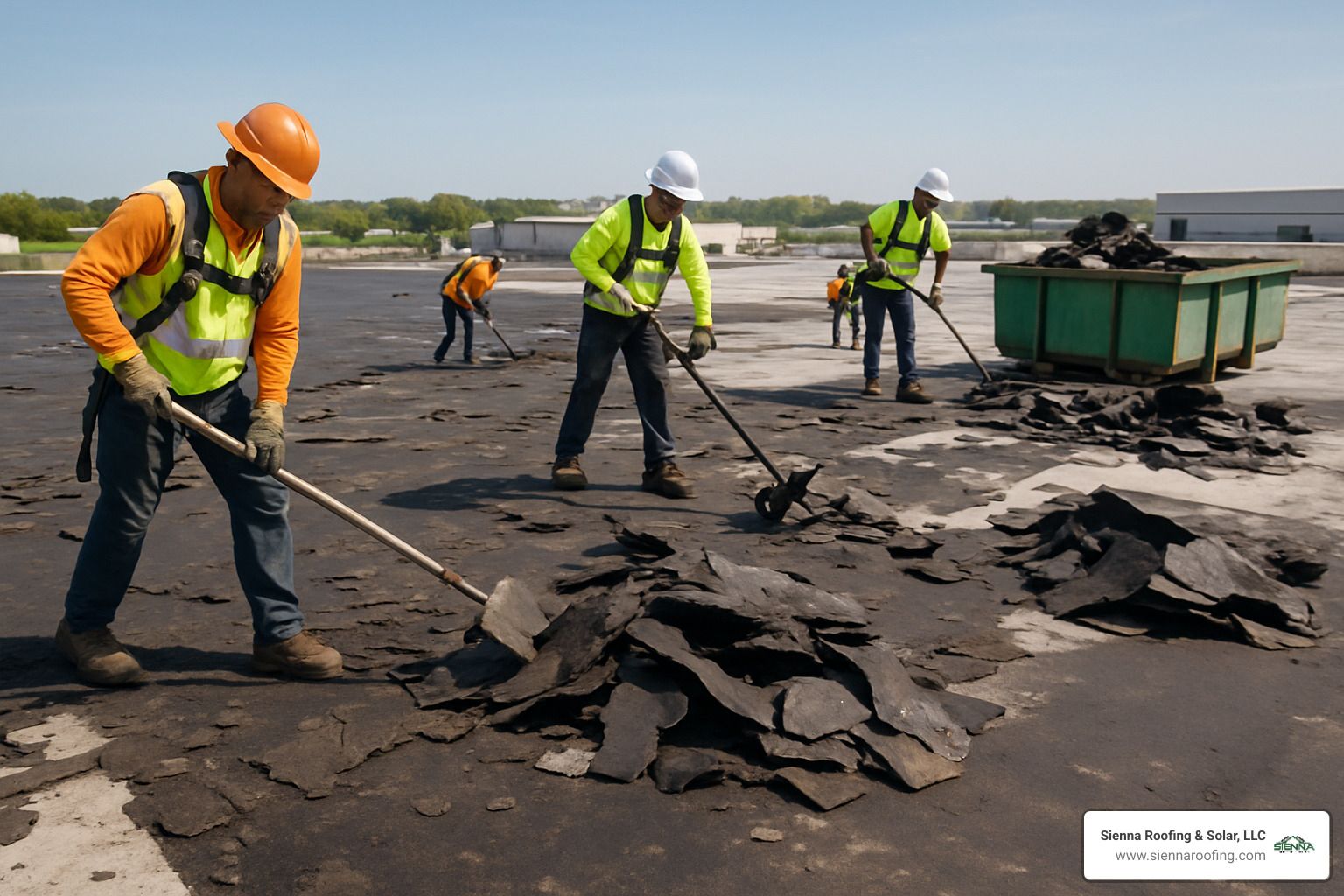
Pre-Project Prep
Before our crew arrives with materials and equipment, we need to lay the groundwork for a successful project. Think of this as the "behind the scenes" work that ensures everything runs smoothly once we're on your roof.
First, we'll conduct a comprehensive roof assessment to determine exactly what needs to be done. This detailed inspection gives us the information needed to order the right materials and develop a proper scope of work. We'll then handle all the permit acquisition with local authorities – something that typically takes 1-2 weeks in the Houston area, depending on the municipality.
Once we have permits in hand, we'll coordinate the project timeline with your building operations. Nobody understands your business schedule better than you do, so we'll work together to find the optimal timing. We'll also develop site-specific safety protocols and arrange for equipment staging areas that won't interfere with your daily operations.
One of the most important steps is communicating with building tenants and employees about what to expect. And of course, in Houston's unpredictable climate, we'll keep a close eye on weather forecasts to avoid starting work right before a downpour!
Installation Methods & Timeframes
Different roofing systems progress at different rates, which affects how long your project will take. Mechanically-fastened systems are typically the speediest option, with our crews able to install 4,000-6,000 square feet per day. Fully-adhered systems are a bit slower at 2,000-4,000 square feet daily, while ballasted systems fall somewhere in between at 3,000-5,000 square feet. Built-up roofing (BUR) takes the most time, with daily progress of 1,500-3,000 square feet.
For a typical 10,000 square foot commercial roof, you can expect the process to unfold over about a week. We'll start with tear-off and disposal of the old roofing (1-2 days), followed by deck inspection and repair to ensure your roof's foundation is solid. Then comes insulation installation, followed by the primary roofing material. The most detail-oriented work – flashing and detail work around penetrations, edges, and corners – typically takes 1-2 days. We'll finish with a thorough final inspection.
Of course, these timeframes assume cooperative weather – something we can't always count on in Sugar Land and the greater Houston area! Hurricane season and summer thunderstorms can certainly throw a wrench in the works, which is why we build some flexibility into our schedules.
Minimizing Business Disruption During Commercial Roofing Replacement
We believe a commercial roofing replacement shouldn't mean shutting down your business or creating chaos for your team. That's why we've developed strategies to keep disruptions to a minimum.
When possible, we'll work during off-hours or weekends so your business can operate normally during peak times. For larger projects, we often use a sectional replacement approach, completing the project in phases to limit exposed areas and maintain building security.
Noise can be a major concern, especially for offices and retail spaces. We use noise mitigation techniques and equipment that minimizes sound transfer to interior spaces. Our debris management systems include contained chutes that direct materials directly to disposal containers, keeping your property presentable throughout the project.
Perhaps most importantly for Houston-area businesses, we ensure your roof is watertight at the end of each workday. There's nothing worse than an unexpected shower finding its way into your building overnight! We use temporary seals and coverings to protect exposed areas between work sessions.
Throughout the project, we maintain clear communication with you and your team. You'll always know what to expect the next day, what areas might be affected, and how the project is progressing against our timeline. It's part of our commitment to making your commercial roofing replacement as stress-free as possible.
More info about Roofing Tear-Off & Replacement
Choosing Materials & Contractors
Selecting the right materials and contractor for your commercial roofing replacement project might just be the most important decision in this whole process. Think of it this way: the right choices will protect your building for decades, while poor choices... well, let's just say they lead to headaches, leaks, and a much lighter wallet.
Material Match-Up: Performance vs. Climate
Houston's weather throws a bit of everything at your roof—scorching summers, occasional freezes, and those unwelcome tropical storm visitors. This unique climate demands materials that can handle the challenge.
TPO (Thermoplastic Polyolefin) shines in our Texas sun with excellent UV resistance and energy efficiency. Many of our Sugar Land clients love how it keeps their cooling bills manageable during those brutal August heat waves.
EPDM (that rubber membrane with the fancy name) offers fantastic flexibility when temperatures swing from hot to cold. It's like yoga for your roof—adaptable and durable.
For restaurants or industrial buildings, PVC roofing provides superior resistance to chemicals and grease. It's the tough guy of commercial roofing that won't back down from harsh conditions.
If you're looking for proven waterproofing for a flat roof, traditional Built-Up Roofing (BUR) with its multiple protective layers has been keeping Houston businesses dry for generations.
Areas with potential water pooling? Modified bitumen might be your best friend, handling those trouble spots that would challenge lesser materials.
For exceptional longevity and hurricane protection, metal roofing stands tall when those Gulf winds come calling. I've seen metal roofs in Pearland that weathered Hurricane Harvey with barely a scratch
And don't overlook cool roofing systems with their reflective properties. They can slash cooling costs by up to 30% compared to darker materials—no small consideration when your summer AC bills arrive.
More info about Energy Efficient Roofs
Vetting Your Commercial Roofing Contractor
Finding the right contractor for your commercial roofing replacement is just as crucial as picking the perfect material. It's like choosing a surgeon—technical skill matters!
Start by checking the basics: proper licensing and current insurance coverage. You'd be surprised how many operators try to skip these fundamentals.
Look for manufacturer certifications that prove they're trained to install your chosen system correctly. These aren't just fancy certificates—they're your assurance that warranties will remain valid.
A contractor's safety record speaks volumes about their professionalism. Ask about their Experience Modification Rate (EMR) and safety protocols. Lower EMR numbers mean fewer accidents and better practices.
Local experience matters tremendously in our unique climate. A contractor from out of state might not understand how our Gulf Coast humidity affects installation timing or material choices.
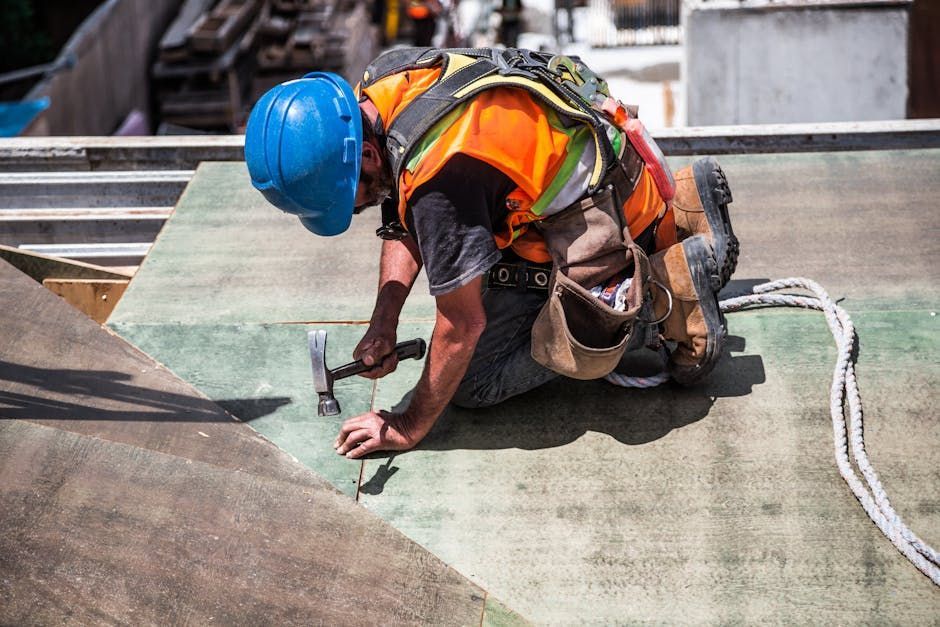
When reviewing proposals, compare them carefully for scope details, material specifications, realistic timelines, and warranty information. The cheapest bid often becomes the most expensive mistake when details are missing.
At Sienna Roofing & Solar, we've built our reputation serving Sugar Land, Missouri City, Katy, Richmond, Pearland, and greater Houston with certified commercial specialists who understand our local weather challenges. When we say your roof will stand up to Texas weather, we've got the track record to back it up.
Understanding Warranty Options
Commercial roof warranties can be as complex as tax code, but they're worth understanding since they protect your investment.
Material warranties cover defects in the roofing products themselves, typically lasting 10-30 years depending on the system. Think of them as the manufacturer standing behind their materials.
Workmanship warranties focus on installation quality, usually covering 2-10 years. This is your contractor promising their work meets professional standards.
The gold standard is a system warranty that comprehensively covers both materials and installation for 15-30 years, giving you peace of mind for decades.
Pay special attention to whether you're getting a No Dollar Limit (NDL) warranty that covers full replacement costs without financial caps, or a prorated warranty that decreases in value over time like a car's depreciation.
Here's something many building owners miss: all warranties include maintenance requirements. Skip your regular inspections, and you might invalidate your coverage entirely. We always provide our clients with clear warranty information and maintenance guidelines to keep their protection intact for the long haul.
Post-Installation Care & Long-Term ROI
Your new commercial roof isn't just a one-time purchase—it's a long-term investment that needs proper care to deliver its full value. With the right maintenance approach, you can potentially double the lifespan of your commercial roofing replacement and maximize your return on investment.
The good news? Proper maintenance doesn't have to be complicated or overly expensive. It just needs to be consistent and thorough.
Maintenance Moves That Double Roof Life
Think of your new commercial roof like you would a high-performance vehicle—regular check-ups and preventive care make all the difference.
We've seen how semi-annual professional inspections in spring and fall can catch small issues before they become budget-busting problems. These routine check-ups are your first line of defense against premature roof failure.
Water is your roof's biggest enemy, which is why quarterly drain and scupper cleaning is so crucial in our rainy Houston climate. When those drainage systems get clogged with leaves and debris, water pools on your roof—and standing water is never good news for any roofing material.
The old saying "a stitch in time saves nine" is especially true for commercial roofs. Prompt repairs of minor damage might seem like an unnecessary expense today, but they'll save you thousands tomorrow. That small puncture or loose flashing might seem insignificant now, but after our next big Texas thunderstorm, it could lead to major interior damage.
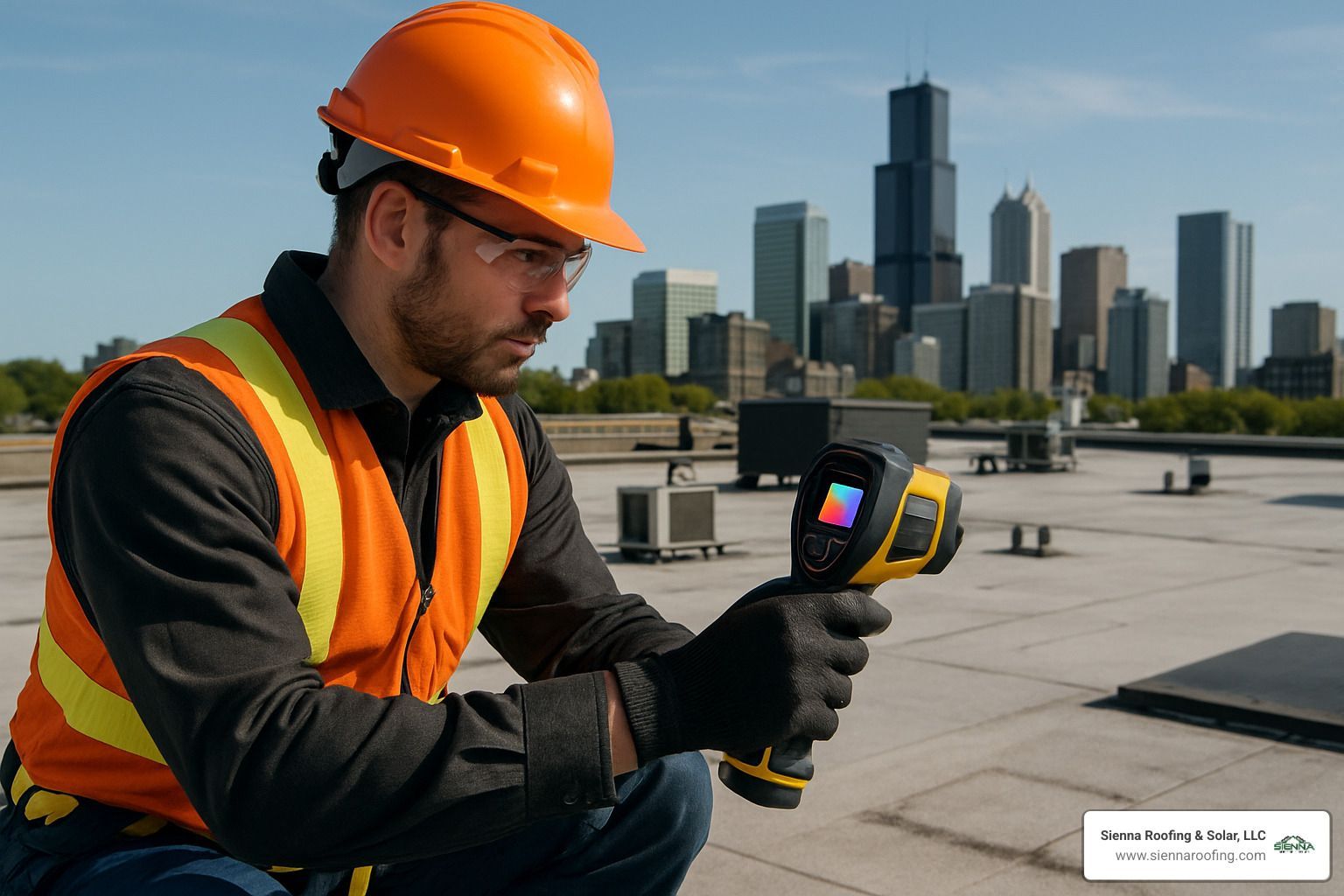
Keep those maintenance records organized and accessible—they're not just paperwork. These documents are often required for warranty claims and can significantly boost your property value when it's time to sell. Plus, they create a valuable history of your roof's performance over time.
Many building owners don't realize how damaging foot traffic can be to a commercial roof. Managing roof access and creating designated walkways can prevent unnecessary wear and tear. Your roof isn't a deck—limiting access to maintenance personnel only is always best practice.
One of our most valuable services for clients throughout Sugar Land and Houston is infrared moisture scanning. This advanced technology can detect moisture trapped beneath the surface of your roofing system long before it would become visible to the naked eye. Early detection means simpler, less expensive repairs.
When and How to Switch Roofing Materials in the Future
Even the best-maintained roof will eventually reach the end of its useful life. When that time comes, you might want to consider upgrading to a different roofing system. Here's what to think about:
Your building's structural load capacity is a primary consideration if you're thinking about switching to a heavier system like tile or a green roof. Not every building is designed to handle these weightier options without additional structural support.
Building codes evolve over time, and your future commercial roofing replacement will need to comply with whatever regulations are in effect at that time. This is particularly relevant in our hurricane-prone region, where wind uplift requirements may become more stringent.
Energy efficiency goals might steer you toward more reflective or insulating materials than what was available when your current roof was installed. The energy savings from these newer systems can be substantial—we've seen clients reduce their cooling costs by 20-30% with the right roofing choice.
The roofing industry is constantly innovating, and technological advancements may offer solutions that don't even exist today. Twenty years ago, TPO roofing was relatively new; now it's one of the most popular commercial roofing materials in Houston.
Many of our clients in upscale areas like Bellaire and West University have successfully transitioned from traditional roofing systems to more energy-efficient options during their commercial roofing replacement projects. With proper planning, these transitions can be smooth and provide excellent long-term value.
We've guided countless Houston-area businesses through this decision process, helping them balance immediate needs with long-term facility plans. Whatever route you choose, we're here to help you protect your investment for decades to come.
Frequently Asked Questions about Commercial Roofing Replacement
How long does a commercial roofing replacement project take?
One of the first questions our clients ask is about timing – and it's a good one! The truth is, commercial roofing replacement timelines vary based on your specific situation.
For a standard 10,000 square foot roof, you're typically looking at 1-2 weeks from start to finish. But several factors can extend this timeline. If your roof has multiple levels or lots of HVAC equipment and other penetrations, we'll need extra time to work around these complexities.
And let's be honest about Houston weather – our sudden downpours and occasional severe weather can certainly throw a wrench in the schedule! We always build some weather contingency into our timelines.
The material you choose matters too. A TPO membrane installation moves along much quicker than a traditional built-up roofing system. And if your building remains occupied during the project, we might need to work in phases or during off-hours to minimize disruptions.
Most of our Houston-area projects wrap up within 1-5 weeks, including all preparation and cleanup. We'll always provide you with a detailed timeline during the planning phase so you know exactly what to expect.
What disruptions should I expect during the process?
Let's be upfront – replacing a commercial roof isn't like changing a lightbulb. There will be some disruptions, but we work hard to minimize their impact on your daily operations.
Noise is probably the most noticeable disruption. The tear-off phase can be particularly loud as crews remove the old roofing materials. Some roofing adhesives and materials also have strong odors that might be noticeable, especially near air intake systems. You might also feel some vibration during certain phases of the work.
From a practical standpoint, you'll likely have some parking limitations while our equipment and materials occupy space in your lot. Depending on the building layout, we might need to temporarily restrict access to certain entrances for safety reasons.
Despite our best containment efforts, some dust may find its way into the building. We take extra precautions around air intakes and building access points, but it's good to be prepared.
The good news? Our clients in Sugar Land and throughout Houston are consistently surprised by how smoothly their commercial roofing replacement projects go with proper planning. We'll work with you to develop a custom plan that minimizes impact on your business operations, whether that means weekend work, night shifts, or carefully phased approaches.
Can I claim tax deductions the same year I replace my roof?
Yes! This is one of the financial bright spots of a commercial roofing replacement project. Thanks to Section 179 of the tax code, businesses can often deduct the full cost of qualifying property improvements in the same tax year the project is completed, rather than depreciating the cost over many years.
This can make a substantial difference in your effective project cost. For example, if you're in the 21% corporate tax bracket, a $100,000 roof replacement could potentially reduce your tax liability by $21,000 in the year of installation.
A few important points to remember:
- This deduction specifically applies to improvements on non-residential buildings
- There are annual limits on the total amount that can be deducted
- Both new roofs and significant improvements may qualify
- You'll need thorough documentation of the improvement
We always recommend consulting with your CPA or tax advisor about your specific situation. Many of our clients throughout Houston have significantly reduced their effective project costs through these tax incentives, making their commercial roofing replacement much more affordable than initially expected.
We can help provide all the necessary documentation about your roofing project to support your tax filing and maximize your potential benefits.
Conclusion
When it comes to protecting your business investment, commercial roofing replacement is one of the most significant decisions you'll make as a building owner. It's not just about fixing a problem – it's about securing your business's future.
Throughout this guide, we've walked through the essential aspects of replacing your commercial roof. The process might seem overwhelming at first, but with the right approach, it becomes a manageable and worthwhile investment that pays dividends for decades to come.
Timing is everything when it comes to roof replacement. Waiting until water is pouring through your ceiling means you've already missed the opportunity for a planned, strategic replacement. Those early warning signs we discussed – membrane blistering, persistent leaks, rising energy bills – are your building's way of telling you it's time to act.
Houston's unique climate poses specific challenges for commercial roofs. The intense sun, heavy rains, occasional freezing temperatures, and threat of tropical storms all demand roofing materials that can stand up to these diverse conditions. That's why local expertise matters when selecting both materials and contractors.
The value of comprehensive warranties cannot be overstated. Take the time to understand exactly what's covered, for how long, and what maintenance requirements must be met to keep your warranty valid. A quality warranty provides peace of mind that your investment is protected.
Perhaps the most underappreciated aspect of roof ownership is the maintenance program. The difference between a roof that lasts 15 years and one that lasts 30 years often comes down to how well it's maintained after installation. Those semi-annual inspections and prompt minor repairs are not expenses – they're investments that double the return on your roofing dollar.
Don't overlook the potential tax benefits of your commercial roofing replacement project. Section 179 deductions, energy efficiency incentives, and depreciation benefits can significantly reduce the effective cost of your new roof. A conversation with your tax professional before your project begins could save you thousands.
At Sienna Roofing & Solar, we've guided businesses throughout Sugar Land, Missouri City, Katy, Richmond, Pearland, and the greater Houston area through successful commercial roofing replacement projects. We understand that your roof protects everything that matters to your business – your inventory, equipment, employees, and customers. It deserves the same careful attention you give to other critical business investments.
Your roof is more than just another building component. It's your first line of defense against the elements and a key factor in your building's energy efficiency, appearance, and value. When you invest in quality materials, expert installation, and ongoing maintenance, you're not just buying a roof – you're securing your business's future.



